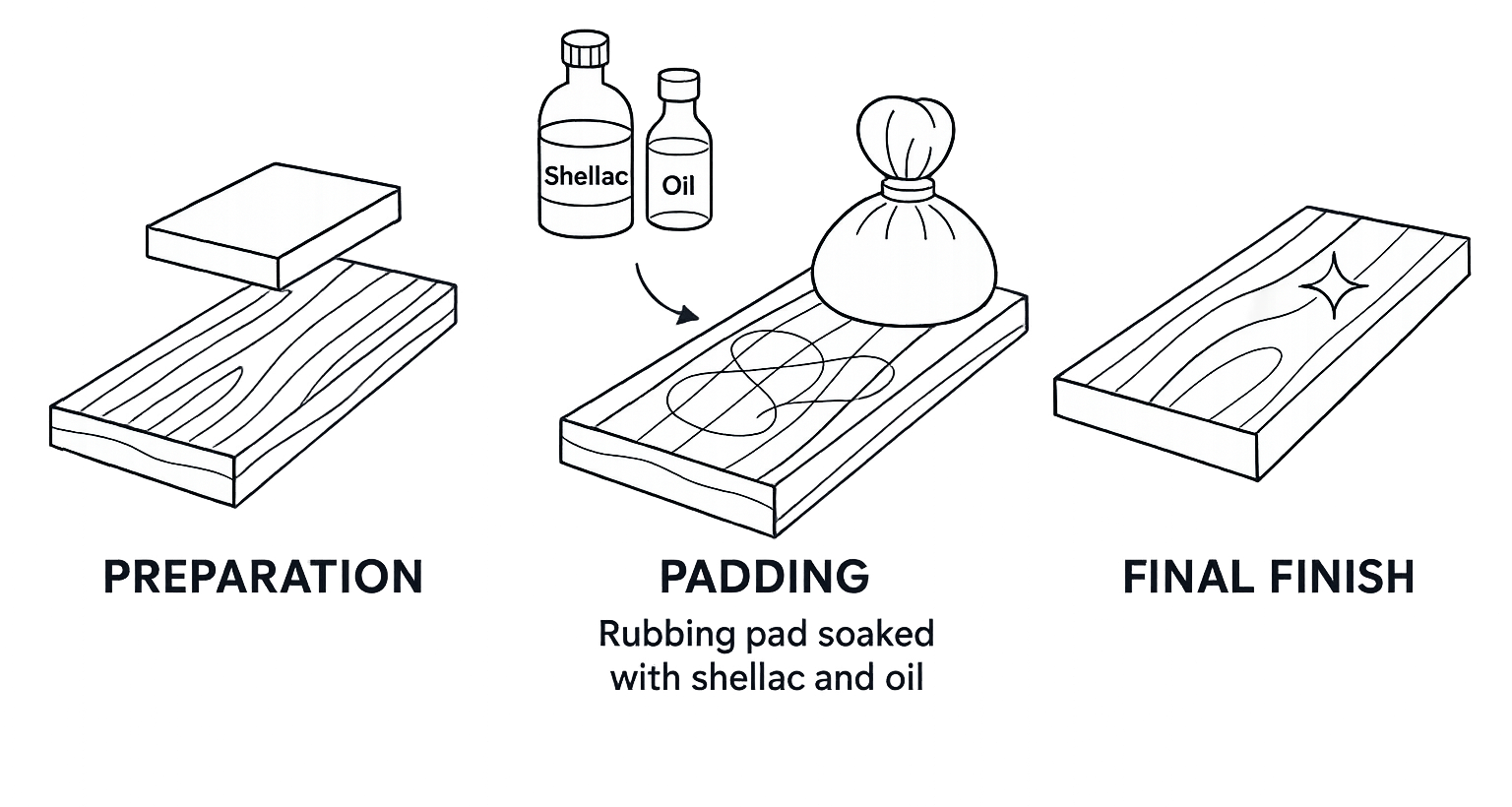What is French Polishing?

French polishing is a traditional wood finishing technique that gives wooden surfaces a high-gloss, deep, and rich appearance. It’s particularly known for being used on antique furniture, musical instruments (like pianos), and fine joinery.
Why use it?
Beautiful Finish – It produces a deep, mirror-like shine that enhances the grain and natural beauty of the wood.
Smooth Surface – The method creates an ultra-smooth finish that feels like glass to the touch.
Ideal for Fine Work – Commonly used on high-end or antique furniture, pianos, guitars, and other wooden items that require a luxurious look.
What is French Polishing?

French polishing is a traditional wood finishing technique that gives wooden surfaces a high-gloss, deep, and rich appearance. It’s particularly known for being used on antique furniture, musical instruments (like pianos), and fine joinery.
Why use it?
Beautiful Finish – It produces a deep, mirror-like shine that enhances the grain and natural beauty of the wood.
Smooth Surface – The method creates an ultra-smooth finish that feels like glass to the touch.
Ideal for Fine Work – Commonly used on high-end or antique furniture, pianos, guitars, and other wooden items that require a luxurious look.
The man behind the art..
The man behind the art..

I’ve spent my entire career in French polishing and the carpentry industry. In the early days, I worked for a French polisher in Kent who had valuable government contacts, which led to a variety of prestigious contracts.
Much of my work involved repairing damaged office furniture and joinery, as well as contributing to new building projects. I also had the opportunity to work on a range of other items, including pianos, bars, and restaurant interiors.
One of the earliest projects I was involved in was at Chevening House, a stately home near Sevenoaks in Kent. At the time, I was a trainee, and we carried out extensive restoration work on the staircase, main living room doors and windows, the library, and more. Following the death of the last private owner, the house was offered to Prince Charles, who visited several times during the restoration process. Although he ultimately declined, the property was transferred to the Foreign Office, who I believe still use it today.
Thanks to the same contact, I went on to work on a number of notable sites, including antique restoration at the Tower of London, dining furniture for HMS Belfast, and various court and office buildings.
I later joined the BP Head Office at Britannic House in Moorgate, London. My role there was general maintenance across their 33-storey building, which included everything from office refurbishments to re-polishing large boardroom and dining tables—some seating around 36 people. At the time, BP was the fourth-largest company in the world and owned over 50 subsidiary businesses.
Eventually, I began securing government-related work independently (through indirect contracts), providing services for departments such as the Ministry of Defence, Department for Business, the NHS, Cyber Security, and even No. 10 Downing Street during Theresa May’s time as Prime Minister.
I’ve spent my entire career in French polishing and the carpentry industry. In the early days, I worked for a French polisher in Kent who had valuable government contacts, which led to a variety of prestigious contracts.
Much of my work involved repairing damaged office furniture and joinery, as well as contributing to new building projects. I also had the opportunity to work on a range of other items, including pianos, bars, and restaurant interiors.
One of the earliest projects I was involved in was at Chevening House, a stately home near Sevenoaks in Kent. At the time, I was a trainee, and we carried out extensive restoration work on the staircase, main living room doors and windows, the library, and more. Following the death of the last private owner, the house was offered to Prince Charles, who visited several times during the restoration process. Although he ultimately declined, the property was transferred to the Foreign Office, who I believe still use it today.
Thanks to the same contact, I went on to work on a number of notable sites, including antique restoration at the Tower of London, dining furniture for HMS Belfast, and various court and office buildings.
I later joined the BP Head Office at Britannic House in Moorgate, London. My role there was general maintenance across their 33-storey building, which included everything from office refurbishments to re-polishing large boardroom and dining tables—some seating around 36 people. At the time, BP was the fourth-largest company in the world and owned over 50 subsidiary businesses.
Eventually, I began securing government-related work independently (through indirect contracts), providing services for departments such as the Ministry of Defence, Department for Business, the NHS, Cyber Security, and even No. 10 Downing Street during Theresa May’s time as Prime Minister.
—
Trevor Le-Butt

